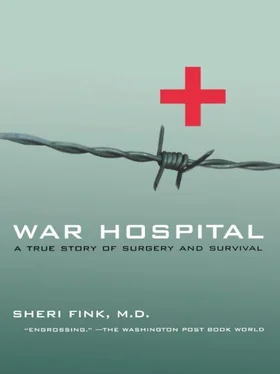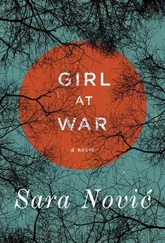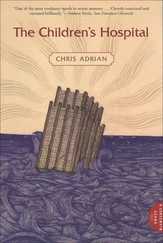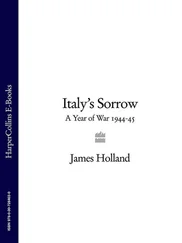I wish to explain my choice to use two techniques somewhat less typical for the written genre known as narrative nonfiction. First, the use of present tense to relate events from the summer of 1992 forward: Some of the main characters spoke in the present tense when deeply immersed in telling their stories. Replicating this in the book, while trying to provide only information that was available to the characters at the times being depicted, seemed like natural ways to convey the progress of the story and an appreciation of the difficult-to-imagine situations confronting the main characters.
Secondly, inclusion of characters’ thoughts and feelings, which are nearly impossible to document: Psychologists have shown that people are often poor at divining what motivations underlie their actions. On the other hand, to not include what interviewees said was going on in their minds at the time of the events would have been to leave out valuable insight into their personalities. When thoughts or feelings were attributed to a character, that person either shared them with me in a plausible way, recorded them close to the time of the events, or expressed them to someone else, whom I then interviewed. Their presentation in italics or paraphrase, rather than in quotation marks, was meant to reflect their unsubstantiated nature.
Any errors that have wormed their way into this book are mine alone. None of those acknowledged here are responsible.
CHAPTER 1: FIRST DO NO HARM
Interviews
Dr. Ejub Alić, Dr. Eric Dachy, Dr. Avdo Hasanović, Dr. Fatima Klempić-Dautbašić, Hakija Meholjić, Dr. Nedret Mujkanović, Dr. Ilijaz Pilav
Published Literature
Bellamy, Ronald, and Zajtchuk, Russ (eds.) Conventional Warfare: Ballistic, Blast and Burn Injuries (used throughout this book as reference); Bosnia Country Handbook , p. 10–3; Columbia Encyclopedia , Sixth Edition, 2002, Columbia University Press. As cited in http://www.bartleby.com/people/Lister-J.html, accessed 12/1/02; Coupland , Amputation for War Wounds , pp. 1–26; Emergency War Surgery , pp. 5, 273–279; Hoffer, The True Believer, p. 11; Médecins sans Frontières, Techniques Chirurgicales de Base, pp. 115–140; Naythons, The Face of Mercy, pp. 39–69; Orić, Srebrenica, p. 224; Silber and Little, Yugoslavia, p. 256; Zajtchuk and Grande (eds.), Anesthesia and Perioperative Care of the Combat Casualty, pp. 2–42 (excellent overview of history of military medicine).
Other Materials
Amateur videotape of this operation was made at Srebrenica Hospital, imprinted with date and time. Begins July 17, 1992, 2:50 P.M., video recorder was reportedly powered by a car battery. Another videotape, taken by Dr. Ejub Alić (date unknown), depicts the line of burnt houses and is narrated with the names of their pre-war owners.
Notes
Based on the name given on the videotape, the patient whose surgery is described in this chapter was first treated by Dr. Fatima Klempić-Dautbašić in an area near the village of Sase. She reports that he later died of his wounds. However, his death is listed in Orić, Srebrenica, as having taken place July 14, 1992, three days before the video imprint. This was most likely the date of his injury, not death.
Interviews
Françoise Bouchet-Saulnier, Dr. Eric Dachy, Senator Alain Destexhe (Belguim), Glenn Hodgson, Dr. Bernard Kouchner, Dr. Jean-Pierre Luxen, Martin Zogg
Published Literature
Aeberhard, “A Historical Survey of Humanitarian Action,” pp. 30–45; Agence France-Presse October 25, 1991 (“Truce in battle for Dubrovnik but no letup on other fronts”); Associated Press, October 19, 28, 1991; Berger, The Humanitarian Diplomacy of the ICRC and the Conflict in Croatia, pp. 22, 66; Bouchet-Saulnier, The Practical Guide to Humanitarian Law, pp. 359–360; Brauman, “When Suffering Makes a Good Story,” pp. 153–154; Council of the International Institute of Humanitarian Law, “Guiding Principles on the Right to Humanitarian Assistance,” pp. 519–525; d’Atorg, Bernard (writing in Espirit); Destexhe, “From Solferino to Sarajevo,” pp. 46–59; Eknes, “Blue Helmets in a Blown Mission?”; Groenewold, World in Crisis, p. xxi; Hermet, “Humanitarian Aid Versus Politics,” p. 110; Holbrooke, To End a War, pp. 27–28, 32; Le Soir, December 21–22, 1991 (p. 2, interview with Dr. Vesna Bosanac; Van Velthem, Edouard, “Sur le siège de Vukovar et la guerre en Croatie: Dr. Vesna Bosanac”); Jelavic, History of the Balkans, pp. 267–269 (history of “Chetnik,” Tito), 295–297 (creation of Yugoslavia after World War II); Malcolm, Bosnia, pp. 229–230; Moreillon, “The Promotion of Peace and Humanity in the Twenty-First Century,” pp. 595–610; Pollack, The Threatening Storm, p. 51; Rieff, “The Humanitarian Trap,” p. 3; Russbach, “Humanitarian Action in Current Armed Conflicts”; Sandoz, “‘Droit’ or ‘devoir d’ingérence’ and the right to assistance,” pp. 215–227; Silber and Little, Yugoslavia, pp. 58–69 (rise of Slobodan Milošević), 204 (deployment of U.N. peacekeepers in Croatia); UNHCR, The State of the World’s Refugees: In Search of Solutions, pp. 117–118; UNHCR, The State of the World’s Refugees: The Challenge of Protection, pp. 84–85, p. 182; Vincent, “The French Doctors’ Movement and Beyond,” pp. 25–29.
Documents
Belgrade Tourist Map, Tourist information Center; Protocol Additional to the Geneva Conventions of 12 August 1949, and Relating to the Protection of Victims of Non-International Armed Conflicts, June 8, 1977; UN Doc. S/RES/688(1991), April 5, 1991 (the text of UN Security Council Resolution 688). UN Doc. S/RES/743(1992), February 21, 1992 (text of UN Security Council Resolution 743 establishing UNPROFOR). Information on Kalemegdan fortress from http://copernico.dm.unipi.it/~milani/belgrado/node7.html accessed 1/20/03, and an example of Kalemegdan’s continuing influence can be found in Radovan Karadžić’s poem, “Kalemegdan,” an English translation of which is in Post and DeKleva, “The Odyssey of Dr. Radovan Karadžić”; Eric Dachy’s unpublished chronicle of his experiences in the former Yugoslavia; International Criminal Tribunal for the Former Yugoslavia, Case IT-95-13a-I, amended indictment December 2, 1997, “The Prosecutor of the Tribunal against Mile Mrkšić, Miroslav Radić, Veselin šljivančanin, Slavko Dokmanović.” Information on the history of the ICRC in Biafra and in Vukovar, Croatia, from the International Committee of the Red Cross’s yearly reports 1967–1971; 1991–1992. The information on Eric Dachy’s activities in late 1991/early 1992 is taken from “Ex-Yugoslavia, Summary of MSF activities,” a seven-page fax document about the activity of the Belgrade and Zagreb offices on letterhead of the MSF international office in Brussels, Belgium. “The Referendum on Independence in Bosnia-Hercegovina, February 29–March 1, 1992,” a report by the Commission on Security and Cooperation in Europe, Washington, D.C., March 12, 1992.
Other Materials
Visnews , Vukovar rushes (videotape footage), November 20, 1991
Notes
PAGE 13 Although some came to consider… Vincent, Anne. “The ‘French Doctors’ Movement and Beyond.” Health and Human Rights. Vol. 2, No. 1. 1996, pp. 25–29.
Читать дальше












